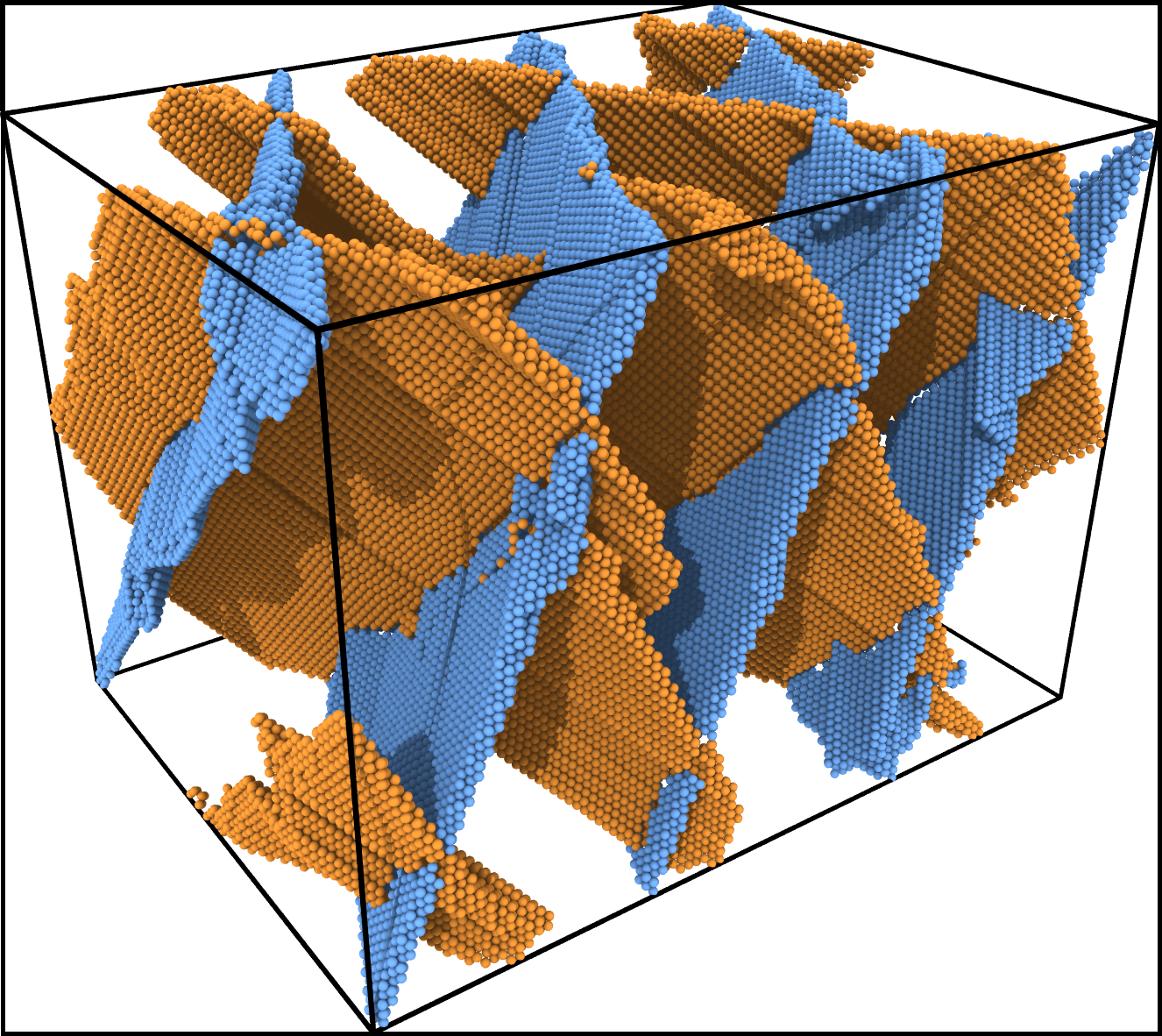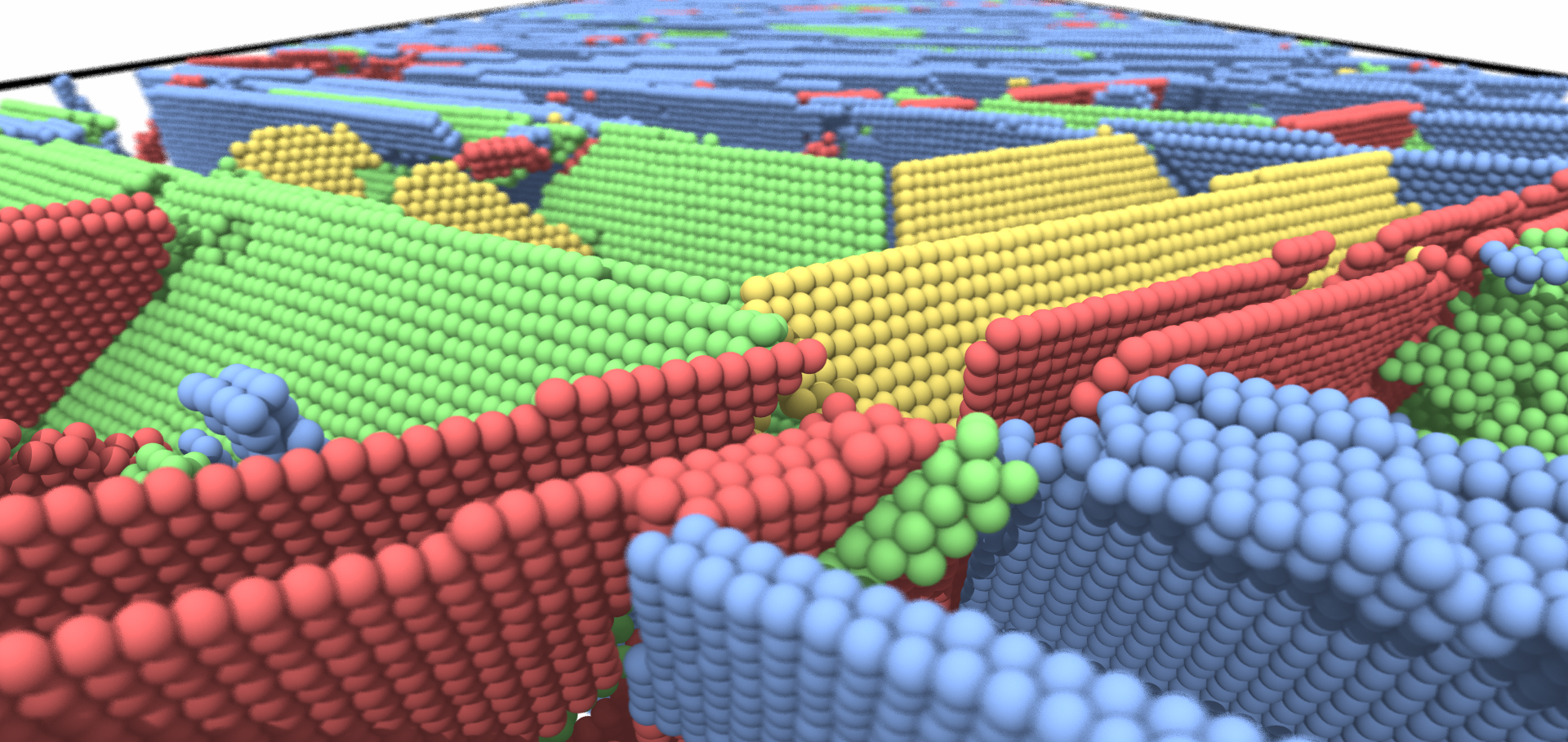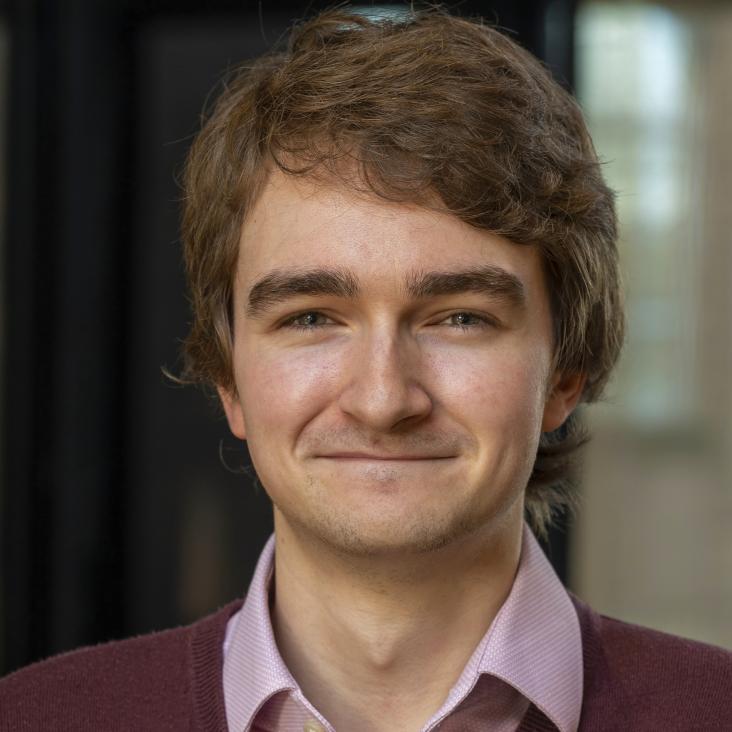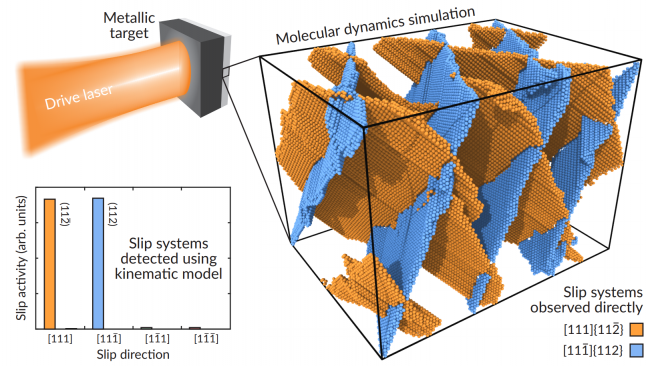
compressed to 90% of its original volume,
modelled using a molecular dynamics simulation.
My research interests lie in 'extreme materials science', the study of the dynamic behaviour of condensed matter under conditions of extreme pressures and strain rates.
With modern high-power laser-compression platforms, it is possible to dynamically compress metallic specimens to the kinds of pressures ordinarily encountered only in planetary interiors, and at deformation rates comparable to those of meteoric impact events. By illuminating them with extremely intense x-rays -- of the kind now routinely produced by x-ray free-electron lasers (XFELs) -- we can generate x-ray diffraction patterns rich with information about these specimens' atomic arrangement and dynamics during the nanoseconds for which they survive before being blown apart by the extreme laser compression. My research focuses on deciphering these diffraction patterns, and using them to identify the microphysical processes occurring at the lattice level during dynamic compression, with a particular focus on the operative plasticity mechanisms. We conduct these experiments at international fourth-generation light-source facilities like the European XFEL (EuXFEL) and LCLS.
To aid the design and interpretation of these dynamic-compression experiments, we often use multimillion-atom, classical molecular dynamics (MD) simulations. These simulations model condensed matter at the level of its individual interacting atoms, allowing us to study in atomistic detail the plasticity agents activated by the colossal shear stresses that accumulate during dynamic compression (see top-right image). These MD simulations also allow us to create synthetic diffraction patterns that we can compare in a direct, like-for-like manner with real experimental data. Together, ultrafast x-ray diffraction and molecular dynamics simulations can provide unique insights into the fundamental plastic behaviour of metals under extreme loading conditions.



